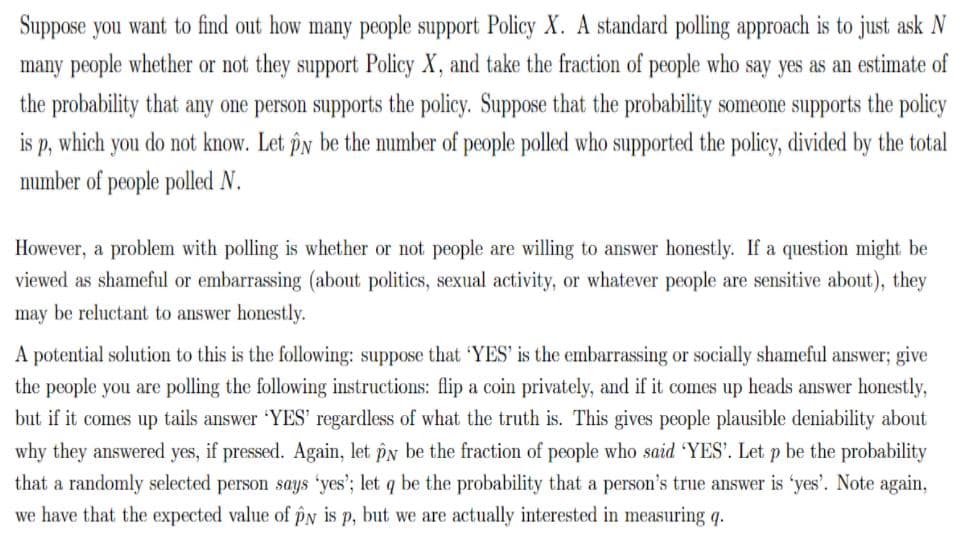How many people should I poll to guarantee the actual error on qn is less than e, with 90% confidence, if I don't know q?
How many people should I poll to guarantee the actual error on qn is less than e, with 90% confidence, if I don't know q?
Chapter8: Sequences, Series,and Probability
Section8.7: Probability
Problem 4ECP: Show that the probability of drawing a club at random from a standard deck of 52 playing cards is...
Related questions
Question

Transcribed Image Text:How many people should I poll to guarantee the actual error on ĝn is less than e, with 90% confidence, if I
don't know q?

Transcribed Image Text:Suppose you want to find out how many people support Policy X. A standard polling approach is to just ask N
many people whether or not they support Policy X, and take the fraction of people who say yes as an estimate of
the probability that any one person supports the policy. Suppose that the probability someone supports the policy
is p, which you do not know. Let îy be the number of people polled who supported the policy, divided by the total
number of people polled N.
However, a problem with polling is whether or not people are willing to answer honestly. If a question might be
viewed as shameful or embarrassing (about politics, sexual activity, or whatever people are sensitive about), they
may be reluctant to answer honestly.
A potential solution to this is the following: suppose that 'YES' is the embarrassing or socially shameful answer; give
the people you are polling the following instructions: flip a coin privately, and if it comes up heads answer honestly,
but if it comes up tails answer 'YES' regardless of what the truth is. This gives people plausible deniability about
why they answered yes, if pressed. Again, let pN be the fraction of people who said 'YES'. Let p be the probability
that a randomly selected person says 'yes'; let q be the probability that a person's true answer is 'yes'. Note again,
we have that the expected value of pN is p, but we are actually interested in measuring q.
Expert Solution
This question has been solved!
Explore an expertly crafted, step-by-step solution for a thorough understanding of key concepts.
This is a popular solution!
Trending now
This is a popular solution!
Step by step
Solved in 2 steps with 1 images

Recommended textbooks for you


College Algebra
Algebra
ISBN:
9781305115545
Author:
James Stewart, Lothar Redlin, Saleem Watson
Publisher:
Cengage Learning


College Algebra
Algebra
ISBN:
9781305115545
Author:
James Stewart, Lothar Redlin, Saleem Watson
Publisher:
Cengage Learning